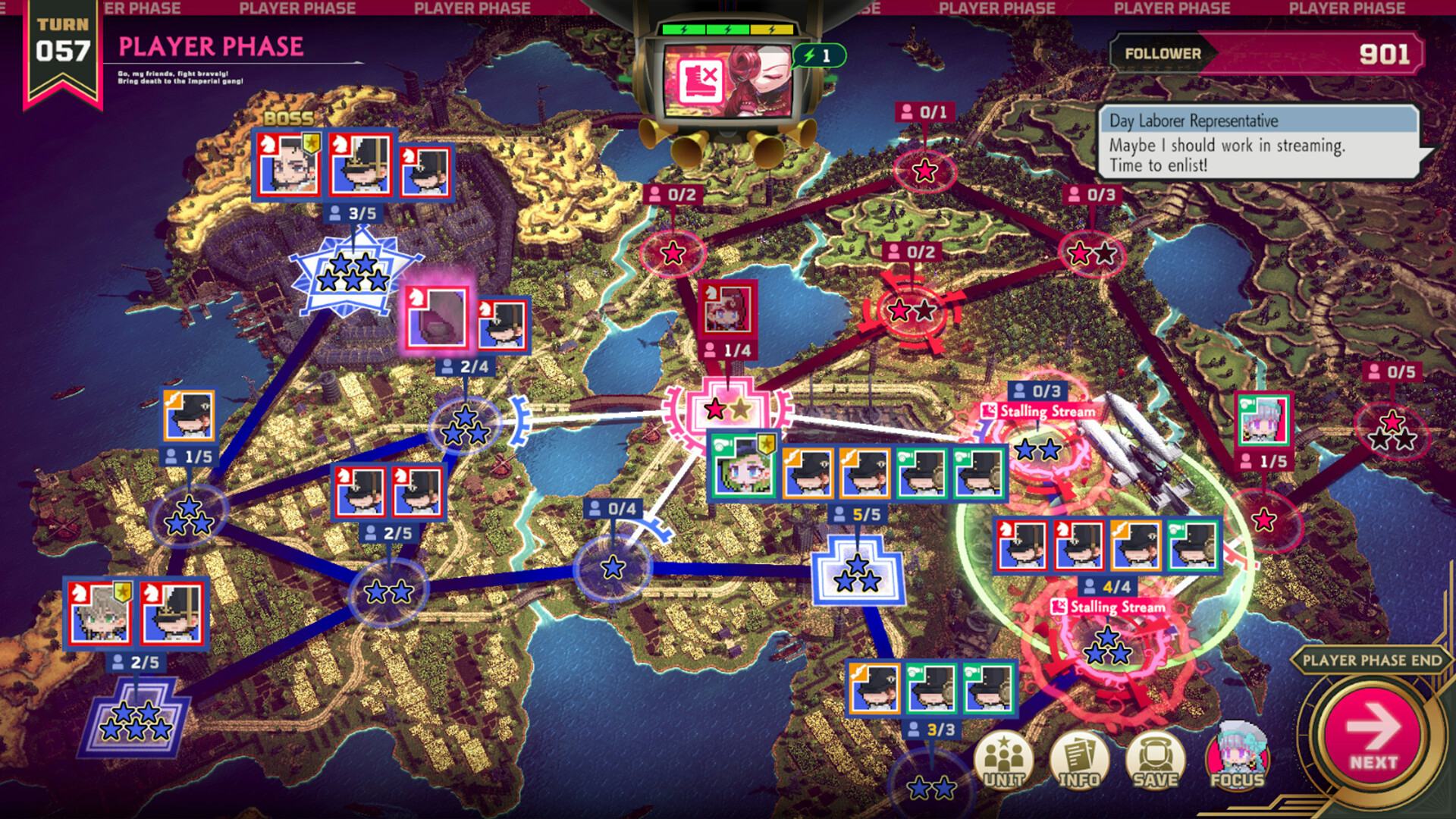
Most people, if they were falsely accused of assassinating a king, would probably try their best to clear their name. But then again, most people wouldn’t make very good video game protagonists. For the star of Steam’s most strangely captivating new strategy game, that false accusation isn’t a threat, but a way to make a name for herself.
Scarlet isn’t your typical hero either. As her game’s title, The Great Villainess: Strategy of Lily, implies, she’s not a hero at all. She’s a dangerous, deceptive, megalomaniacal villain bent on destroying a kingdom, and the king’s demise gives her the perfect chance. As The Great Villainess opens, the kingdom’s capital is in flames and Scarlet is on the verge of being captured, until she’s rescued by a visiting noble in her streaming airship.
Yes, a big part of The Great Villainess is about streaming. Despite the game’s medieval anime aesthetic, its protagonists and parts of its setting are decidedly modern. The airship belongs to the titular Lily, a woman who’s both second-in-command to Scarlet and a potential love interest — not that that’s an entirely exclusive position. Scarlet has a habit of aggressively flirting with friend and foe alike, though there’s less room for actual romance storylines in the game than it might seem.
Aside from having tragically little smooching, the wild interactions between Scarlet and the rest of the cast are among the best parts of The Great Villainess. Just about every conversation with her got a deep, unexpected laugh out of me, which was especially welcome given how brutal the game can be.

While its story is one of the biggest draws of The Great Villainess, it pulls no punches in combat. Battles are large-scale affairs that see your army facing off against much larger enemy forces in continent-spanning skirmishes. The map for each stage consists of a series of nodes representing bases and battlefield, connected with lines to show how you can move between them. Each turn, you can move your units to any node their current position is connected to, starting a fight if there’s already an enemy at their destination. From there, you can let the game run the numbers itself and dish out damage to everyone based on a power rating, or take control in turn-based combat, where you take the gamble of doing either much better or much worse than the auto-battle predicted.
The outcome of individual battles are important, but what I wasn’t expecting is that the real strategy happens on the larger map. The goal of every battle is eventually capturing the enemy’s main base by slowly moving toward it, dispatching troops on the way. Technically, it doesn’t matter how many soldiers you defeat as long as you take down their commander at the end. There’s a surprisingly complex system of supply lines, where only spots connected to your main base receive resupplies (refilling your units’ health) between battles, so cutting off the path between an outlying enemy base and headquarters can often be more effective than trying to simply dominate in battle.

Then there’s the streaming I mentioned. Lily’s airship gets its own turn in combat, letting you position it on the world map and choose which show to stream, all with their own effects. One prevents enemies from resupplying, another gives your army a speed boost, and one even makes it possible to capture enemy commanders. This last one is crucial, as captured commanders join your army for a variety of reasons, whether it’s because they fear Scarlet’s wrath or just have a crush on her and want an excuse to get close anyway. The number of commanders you capture or execute also plays into whether you receive a good or bad ending, if you manage to make it that far.
The Great Villainess is an unorthodox strategy game in a lot of ways, just like its protagonist. I’ve certainly never played a game that made me think about supply lines and pickup lines the same amount, nor has a strategy game ever made me laugh out loud this much. Combat itself is dense and idiosyncratic in a way that I wouldn’t enjoy in just any game, but the bizarre fusion of strategy and story here has made it an unexpected favorite for me this year.







